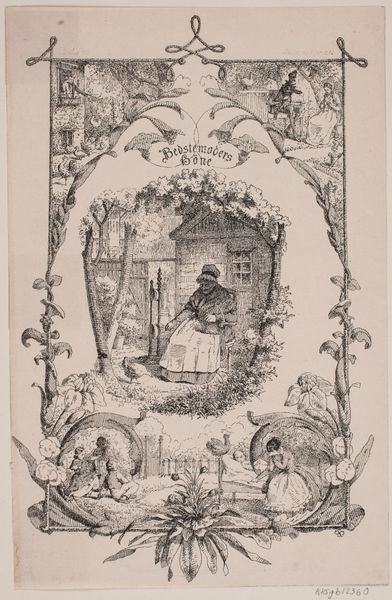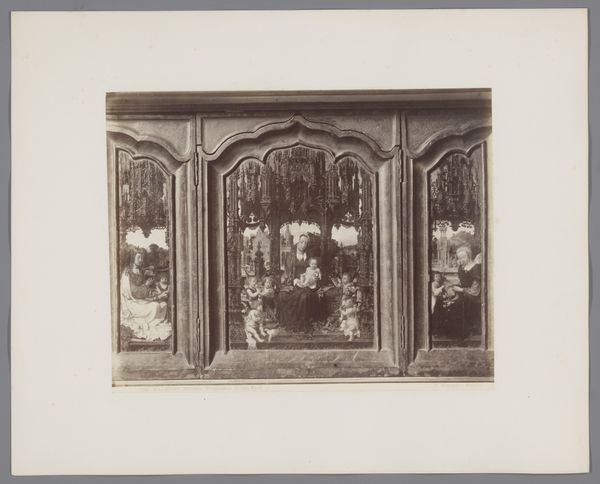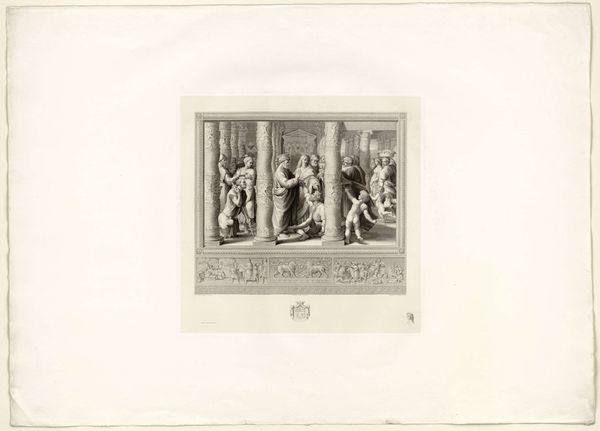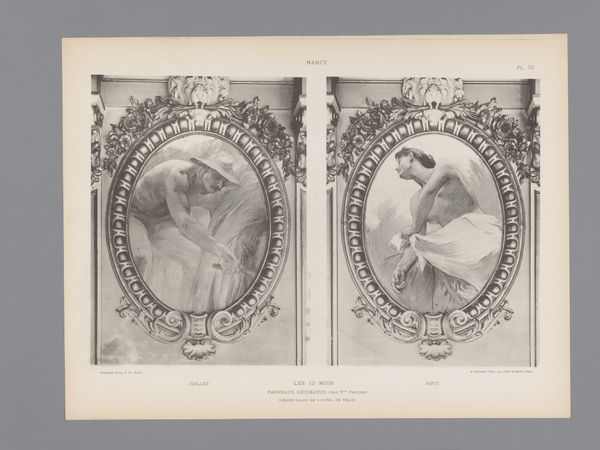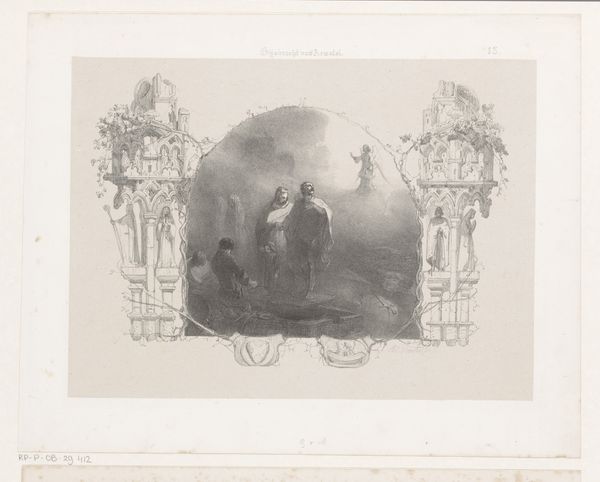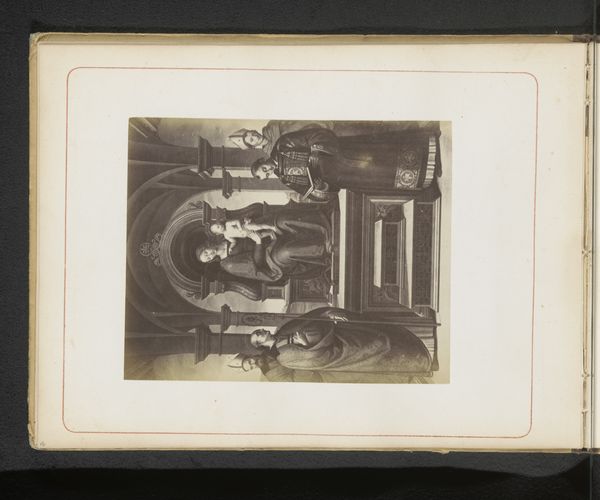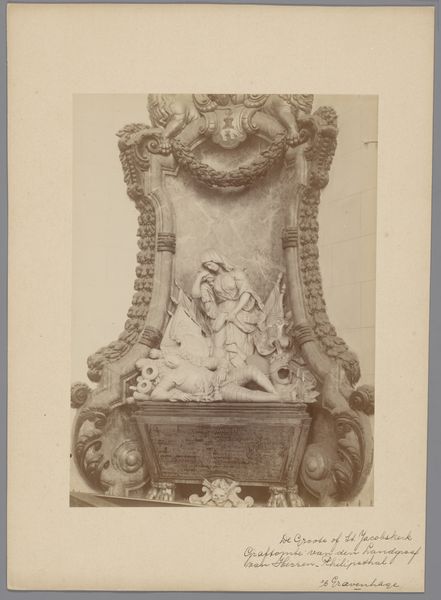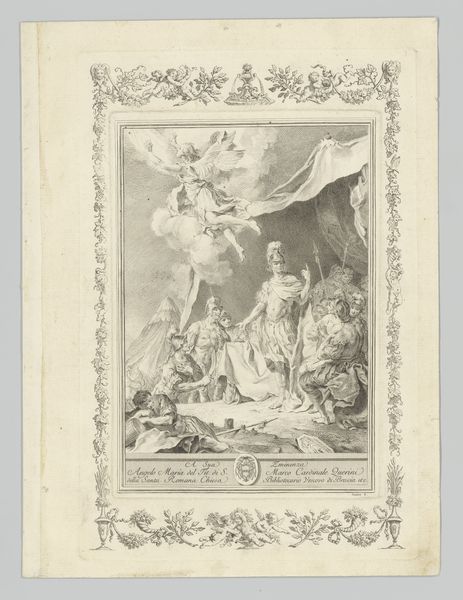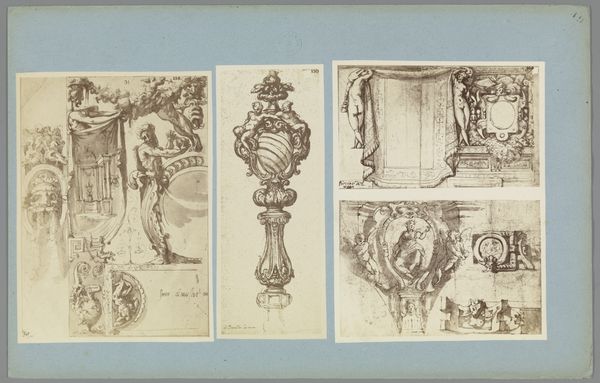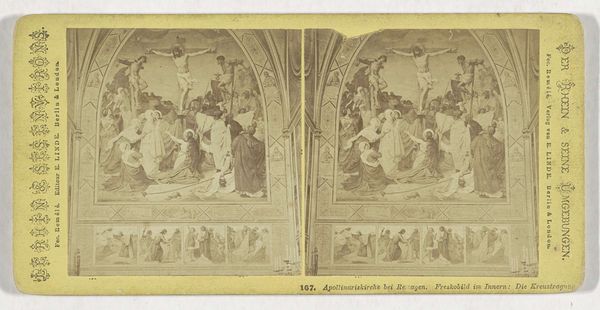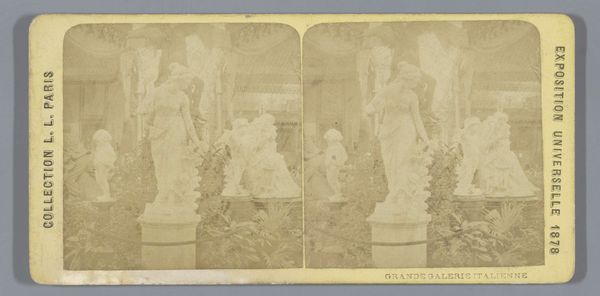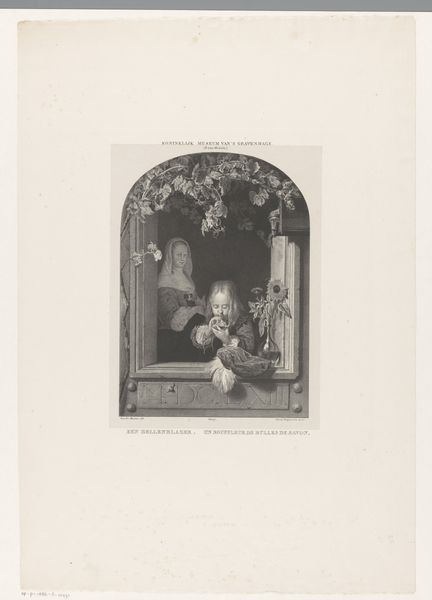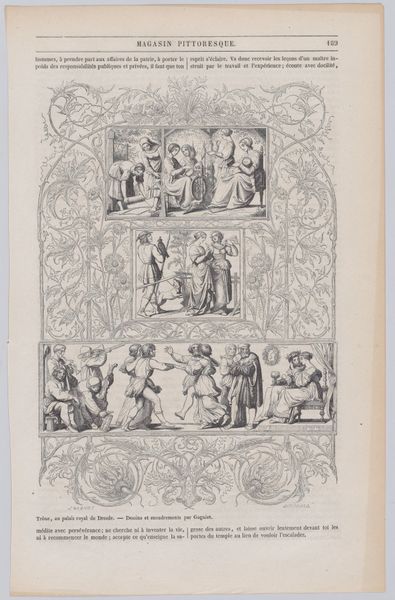
Stilleven met kandelaren, beeldhouwwerk, sieraden en een spiegel met de reflectie van een jonge vrouw 1855 - 1875
0:00
0:00
Dimensions: height 86 mm, width 174 mm
Copyright: Rijks Museum: Open Domain
Curator: Here we have an intriguing still life from between 1855 and 1875, attributed to John Reynolds. Titled "Stilleven met kandelaren, beeldhouwwerk, sieraden en een spiegel met de reflectie van een jonge vrouw" it's a gelatin-silver print, presented as a stereoscopic card, designed for viewing in three dimensions. Editor: The immediate impression is one of vanity, and perhaps melancholic self-absorption. The arrangement of jewellery, statuettes, and candlelight leading to a reflected portrait creates a stage for self-display, while the young woman's posture hints at quiet introspection, or perhaps even ennui. Curator: Exactly! The staging is deliberate, reflecting the era’s burgeoning interest in bourgeois domesticity and the carefully curated self. Photography was still quite novel then. Its ability to capture detail offered a new avenue for expressing social status through possessions. This stereoscopic format also contributed; ownership of the viewing device and the images were themselves markers of cultural capital. Editor: The mirror is so important. For centuries mirrors have acted as potent symbols of vanity but also self-knowledge, gateways to introspection. What stories, memories, or self-deceptions does she find within her reflection? I note how the reflection occupies the highest visual space, symbolically dominating. Curator: True. The use of the mirror implicates us, the viewers, directly into the process. Consider also the framing, all those carefully arranged objects and repeated shapes acting almost as an armor against a rapidly changing world. The image thus encapsulates Victorian society's complicated dance between outward show and private emotional realities. Editor: And let's not forget the cultural baggage that all these repeated circles bring: mirroring the self and reflection again. Circles within circles evoke a sense of closure and eternity, a visual echo of her isolated contemplation. These choices certainly offer clues as to what was esteemed or perceived as attractive for the Victorian era. Curator: Indeed. The romantic idealization of the woman within a setting that speaks of social aspiration. Seeing art as this direct portal into understanding shifts in social and gender constructs… it really showcases what studying it brings! Editor: Absolutely. By exploring the iconography we gain empathy, insight and a sense of intimate conversation. The art is both time-locked yet also eternal.
Comments
No comments
Be the first to comment and join the conversation on the ultimate creative platform.
